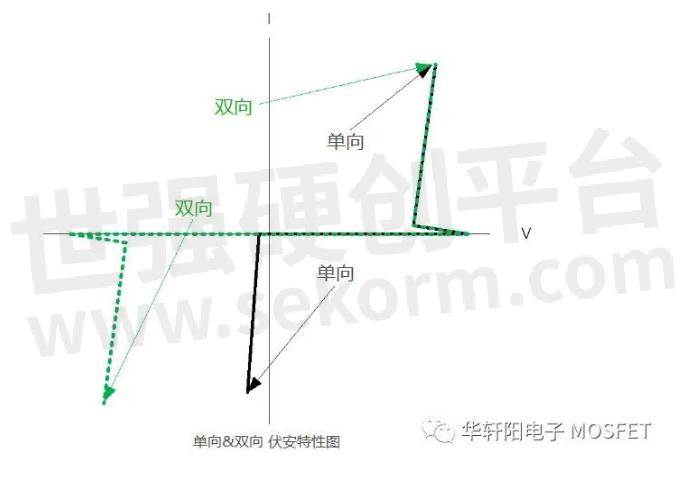Why Should We Choose Unidirectional TVS as Much as Possible When Selecting TVS

Unidirectional TVS can only conduct current in one direction, usually guiding the current to the ground or other low potential points when the voltage is too high.
bidirectional TVS can conduct current in two directions and is suitable for applications that require bidirectional protection, such as communication or signal lines, where signals may appear in the form of pulses in both positive and negative directions.

Fig.1
However, in general, for most applications, it is beneficial to choose unidirectional TVS as much as possible, for the following reasons:
Performance characteristics: Unidirectional TVS usually outperforms bidirectional TVS in terms of protection characteristics. They focus on voltage protection in one direction, resulting in faster and more accurate response in that direction. This is crucial for protecting sensitive electronic components as they may be more sensitive to overvoltage.
Reliability: Unidirectional TVS typically have higher voltage tolerance in one direction. Due to the protection of bidirectional TVS in both directions, their design may compromise in each direction, resulting in a decrease in overall performance and reliability.
Design simplification: Using unidirectional TVS can simplify circuit design. For most applications, only unidirectional overvoltage protection needs to be considered, so using unidirectional TVS can reduce design complexity.
Performance advantage: Unidirectional TVS typically have lower voltage cutoff and higher current capacity in its focused direction. This means that when overvoltage events occur, they can more effectively absorb and disperse electrical energy, providing better protection.

Fig.2
It should be noted that in certain specific applications, bidirectional protection may be required, and choosing bidirectional TVS is appropriate. However, for most cases, choosing unidirectional TVS as much as possible can provide better performance. When selecting models, you should make choices based on specific application requirements and circuit characteristics to be protected.
- +1 Like
- Add to Favorites
Recommend
- Yint Electronics Recommends the TVS Model SMBJ6.5CA or P6SMB6.8CA for Surge Protection of Smart Meters
- PANJIT Newly Released a Series of Surface Mount TVS Diode Which Has Full Voltage Range Selection for Any Power System
- Yint‘s ESDSR05-4 TVS Meet the Electrostatic Protection Design Of SIM Card Reading Circuit
- WAYON TVS WSxxP30SMC(-B)-AT Series in SMC (8.0×6.0×2.5mm) Package, the “Invisible Escort“ of New Energy Vehicles
- Notice of Expanded Power Zener (TVS) Lineup (Maximum Operating Voltage: 240 V→320V)
- Diotec‘s P4SMAJ30CA-AQ TVS Offers 30V of Working Voltage and 400W of Peak Pulse Power for Sensitive Onboard Electronics
- Application Of TVS Transient Suppression Diode In Brushless Motor
- Hua Xuan Yang Electronics: Domestic Power Device Solutions for PC Power Supplies
This document is provided by Sekorm Platform for VIP exclusive service. The copyright is owned by Sekorm. Without authorization, any medias, websites or individual are not allowed to reprint. When authorizing the reprint, the link of www.sekorm.com must be indicated.






























































































































































































































































































































































































































































































































































































































































































































































































































































































